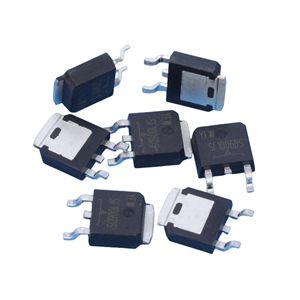Date:2024-09-24 Categories:Product knowledge Hits:1422 From: Guangdong Youfeng Microelectronics Co., Ltd(YFW)
The Schottky diode structure has low series resistance and strong nonlinearity, making it suitable for RF circuits.
After some metals come into contact with N-type semiconductor materials, electrons will diffuse from the N-type semiconductor material into the metal, forming a depletion layer in the semiconductor material that has characteristics similar to conventional PN junctions. The structure formed by the contact of metal and semiconductor materials, resembling a PN junction barrier, is called a Schottky junction. A
When positive and positive bias voltages are applied (with the anode metal connected to the positive pole of the power supply and the N-type substrate connected to the negative pole of the power supply), the Schottky barrier layer narrows and the internal resistance decreases. If a reverse bias voltage is applied at both ends of the Schottky barrier, the Schottky barrier layer widens and its internal resistance increases.
The only difference between SS14, SS24, and SS34 is the maximum forward rectified current, with SS14 being 1A, SS24 being 2A, and SS34 being 3A.
The specific parameters of these three Schottky diodes are as follows:
SS14 Schottky diode: maximum reverse peak voltage VRRM=40V, maximum forward rectified current I (AV)=1A, maximum forward voltage drop VF=0.5V, maximum reverse leakage current IR=20mA.
SS24 Schottky diode: maximum reverse peak voltage VRRM=40V, maximum forward rectified current I (AV)=2A, maximum forward voltage drop VF=0.5V, maximum reverse leakage current IR=20mA.
SS34 Schottky diode: maximum reverse peak voltage VRRM=40V, maximum forward rectified current I (AV)=3A, maximum forward voltage drop VF=0.5V, maximum reverse leakage current IR=20mA.
SS14, SS24, and SS34 are Schottky diodes with a single conductivity. But its most prominent feature is its short reverse recovery time, so it is often used as a high-frequency, low-voltage, high current rectifier diode, freewheeling diode, and protection diode.

Previous: Classification, Structure, and Principle of MOSFET
Next: Can fast recovery diodes and rectifier diodes be used interchangeably?